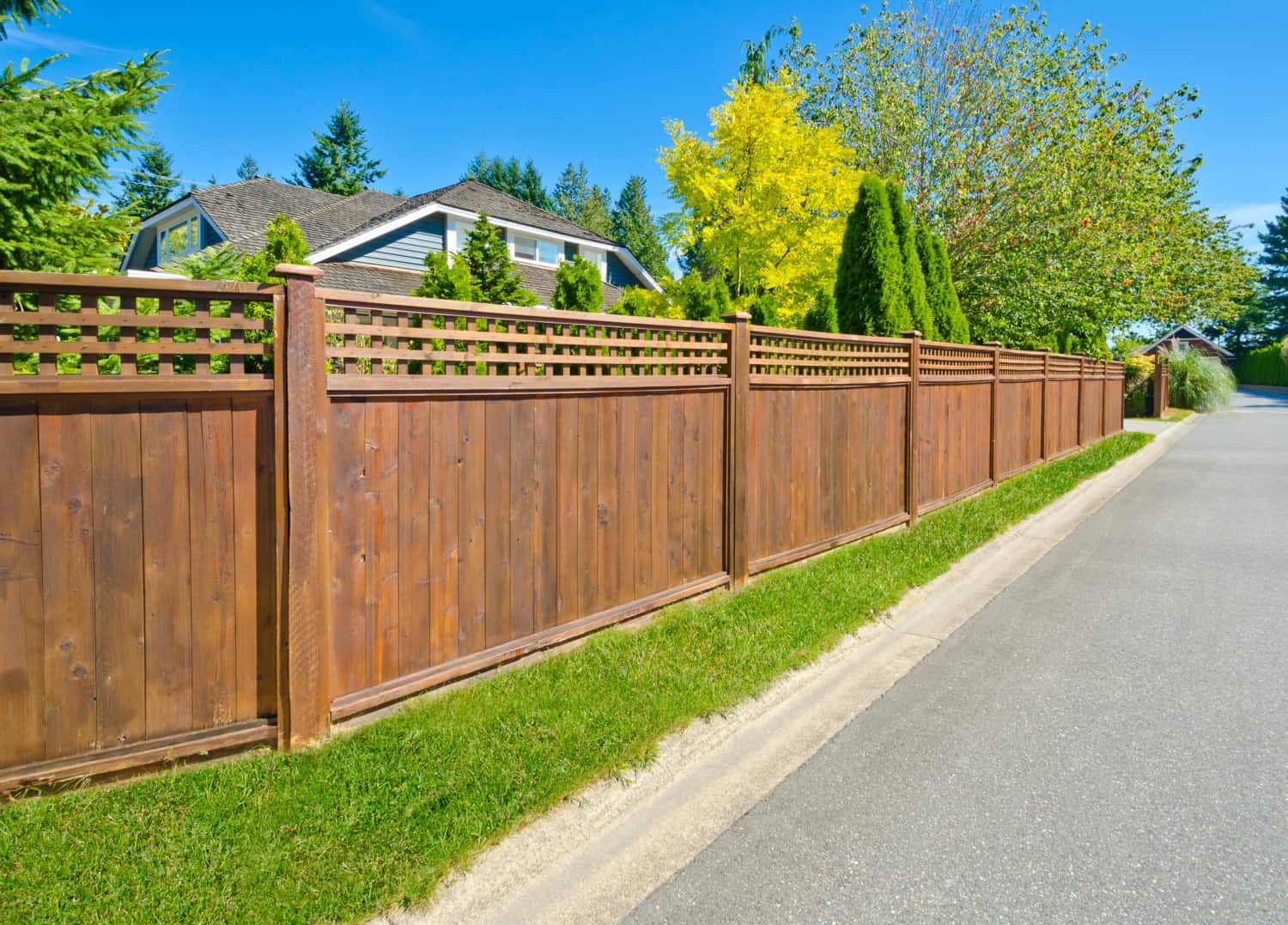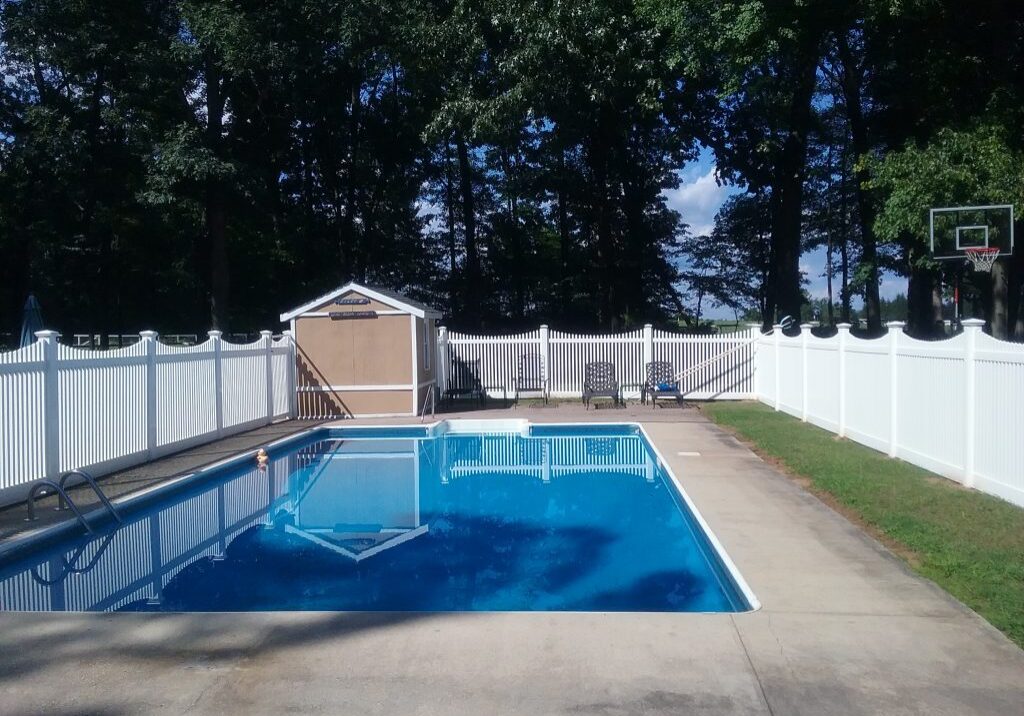All Categories
Featured

As sustainability comes to be a growing concern for organizations and property owners, the demand for eco-friendly structure products extends to exterior rooms, consisting of fencings. Traditional secure fencing materials such as metal, vinyl, and wood can have significant environmental effects, from logging to chemical treatments and plastic waste.
- Bamboo Fence. Bamboo is among the most sustainable products on the market, and it is progressively used in fence building and construction because of its quick development and stamina. Unlike hardwood trees, bamboo is a turf that can grow back totally within simply a few years, making it extremely sustainable. It's normally resistant to insects and rot, which suggests it does not call for rough chemicals or treatments, making it a green selection.

Advantages: Bamboo fences are resilient, low-maintenance, and eco-friendly. They are naturally immune to termites and dampness, minimizing the need for chemical preservatives. Additionally, bamboo helps in reducing dirt erosion as a result of its deep origin systems. Considerations: Bamboo can be extra expensive than some conventional timber fencing options, and it might not appropriate for locations with extreme chilly or freezing temperatures, as it can become breakable in time. 2. Recycled Products Secure Fencing. Many manufacturers now supply fences made from post-consumer plastic, recycled wood, or even repurposed steel. Many composite materials, for instance, are made from recycled plastic bottles, wood scraps, and other materials that would certainly otherwise be discarded.
Benefits: Recycled product fences help preserve natural deposits, decrease air pollution, and lower the environmental impact of the manufacturing procedure. They can additionally supply excellent toughness, resisting decay, mold and mildew, and termites. Factors to consider: While recycled material fencings are very durable and environmentally friendly, they might not have the very same all-natural aesthetic that some property owners look for. However, manufacturers now supply layouts that imitate the look of wood or rock. 3. Compound Fence. Composite fencing is made from a mix of wood fibers and plastic, often integrating recycled materials. This combination develops an extremely sturdy, low-maintenance fencing that does not call for regular paint or staining, making it a sustainable option. Compound fences are resistant to rot, insects, and weathering, which implies they can last for several years without the demand for regular replacements.

Perks: Compound fences are durable and can endure extreme weather conditions, minimizing the need for replacements or fixings. Because composite products commonly consist of recycled web content, they help in reducing plastic waste. In addition, they do not require dangerous chemicals or therapies. Factors to consider: Compound fences can have a higher ahead of time price than typical timber or plastic, though their longevity and decreased upkeep costs frequently make them a more economical alternative over time. 4. Living Fencings. Living fences, additionally known as hedgerows, are an environmentally friendly and aesthetically pleasing choice that entails growing dense bushes, trees, or climbing up plants along your home line to produce a natural obstacle. Popular plants for living fences consist of boxwood, privet, and holly. These plants can be grown to provide privacy, windbreaks, and noise reduction while adding to environmental wellness.
Conveniences: Living fences advertise biodiversity, improve air high quality, and absorb co2, making them among the most environment-friendly fence alternatives. They additionally provide a natural environment for pests and birds and can minimize sound pollution and assist manage temperatures in your backyard. Factors to consider: Living fences call for regular upkeep, such as cutting, watering, and in some cases pest control. They likewise take some time to develop and might not give prompt privacy compared to solid wood or vinyl fences. 5. Cedar and Redwood Fencing. Cedar and redwood are preferred all-natural timber choices for fences. These products are durable and naturally immune to rot, bugs, and moisture, which indicates they normally do not need using hazardous chemical therapies. When sourced from sustainably handled forests, cedar and redwood fencings can be an eco friendly choice that offers both appeal and long life.
Advantages: These timbers are eco-friendly, eco-friendly, and offer outstanding longevity and natural appeal. Cedar and redwood additionally have a reduced environmental impact when harvested properly, making them an environmentally friendly choice for numerous property owners. Factors to consider: While cedar and redwood fences have environmental advantages, they do still require periodic maintenance and are extra costly than various other wood alternatives. It is very important to make sure that the timber is sourced from sustainable forests to optimize its environmental advantages. 6. Rock and Block Fence (Redeemed) Rock and block fences are unbelievably durable and low-maintenance, and they can be eco-friendly when made from reclaimed products. Redeemed rock and block are usually recovered from old buildings or construction tasks, lowering waste and saving natural deposits. These products offer a timeless look and are highly resistant to weathering, making them a resilient option for fencing.
Advantages: Recovered rock and brick are sturdy, visually pleasing, and call for minimal upkeep. By repurposing these materials, you help in reducing the need for new sources and lower waste in land fills. Considerations: The setup of stone and brick fences can be labor-intensive and much more expensive compared to other materials, but their longevity and low upkeep needs can make them affordable in the future. Final thought. Environment-friendly fencing alternatives are not just great for the atmosphere however additionally provide durability, low upkeep, and visual charm. Whether you choose bamboo, recycled materials, composite fencing, living fences, or sustainable wood like cedar and redwood, there are numerous means to decrease your environmental footprint while improving your home's look. By selecting these eco-conscious materials, you can add to a healthier planet and produce an outdoor area that reflects your values.
Latest Posts
Smooth Aluminum Seamless Gutters: The Smart Choice for Your Home
Published May 26, 25
1 min read
Join WyHy FCU – Top Benefits for Your Money Goals
Published May 26, 25
1 min read
Learn Why Chicago Drivers Prefer Montclare Auto Repair for Reliable Service and Huge Savings
Published May 25, 25
1 min read
More
Latest Posts
Smooth Aluminum Seamless Gutters: The Smart Choice for Your Home
Published May 26, 25
1 min read
Join WyHy FCU – Top Benefits for Your Money Goals
Published May 26, 25
1 min read
Learn Why Chicago Drivers Prefer Montclare Auto Repair for Reliable Service and Huge Savings
Published May 25, 25
1 min read